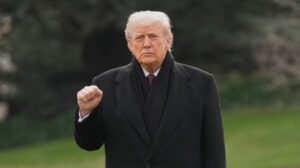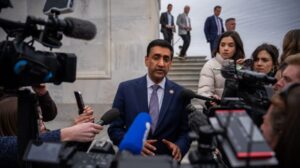The Dictatorship
Prepare to be unnerved by season three of ‘The White Lotus’

Dark, debauched, unhurried and spiritually probing, season three of “The White Lotus” launches Sunday night on Max. A reveal in episode one will have fans squawking like the “chattering monkeys” that the show keeps referencing. Soon after, viewers will be ogling bare-chested (and bare-butted) men so finely hewn they make the hottest guy at your gym look like the bespectacled dork who taught you “World Religions” in college. Which reminds me: Showrunner Mike White is thinking about religion this season. And he is thinking big.
Showrunner Mike White is thinking about religion this season. And he is thinking big.
Season three is set in Thailand at a luxury resort that, we are told, resides one beach over from where the Indian Ocean tsunami claimed thousands of lives in 2004. The country’s reputation for attracting sketchy foreigners, or what a character in the show calls “LBHs” (i.e., Losers Back Home), is fracked for all of its narrative possibilities. So is Thailand’s rich Buddhist heritage. America has periodically experienced Hollywood-induced Zen crazes; maybe season three will trigger another.
The visitors this season, as always, are mostly ultra-wealthy Anglos. Spa guest Piper Ratliff (Sarah Catherine Hook), an undergraduate studying a local Buddhist sage, describes them as “rich bohemians from Malibu in their Lululemon yoga pants.”
Piper’s mom, Victoria (Parker Posey), informs her hosts — though they never asked — that Piper’s brother Lochlan (Sam Nivola) is deciding between Duke and University of North Carolina. The other brother, Saxon, (Patrick Schwarzenegger) is toxic masculinity enfleshed. Saxon attended Duke, as did his finance-guy dad, Timothy (Jason Isaacs), whose forthcoming vacation, I regret to say, will not be restful.
Belinda (Natasha Rothwell) from season one is back. The down-on-her-luck spa manager from Maui, Hawaii, is visiting this White Lotus resort with her son Zion (Nicholas Duvernay) to study with the local masseuses. As was true in season one, her working-woman decency is juxtaposed with the colossal self-absorption of the monied clientele.
Contrast plucky Belinda with Rick Hatchett (Walton Goggins), a criminal who nurses a dark, all-consuming vendetta. Or contrast her with Laurie (Carrie Coon), Jaclyn (Michelle Monaghan) and Kate (Leslie Bibb), three childhood friends who party with the local expat himbos. Each of these 40-something women has an unusual penchant for overhearing the other two disparaging them. Kate from Austin, Texas, overhears her friends making fun of her for being a Trump voter. That may outrage her besties, but the show doesn’t linger on her politics, or anyone else’s. Season three is interested in theology, not ideology.
This “White Lotus,” I repeat, is dark. Gone are the sun-splashed scenes that lit up season two, which White dubbed “a bedroom farce with teeth.” This time around an abundance of scenes are shot at night and twilight. Even at high noon, the frames are saturated with ocher.
Then there’s the darkness of the story itself, which I will leave to viewers to experience on their own terms over the coming weeks.

White, as I pointed out previouslyhas a genius for making bad decisions look beautiful. In seasons one and two, he let us gawk at humans flaming with desire, entombed within their lusty selves. Season three continues this tradition. We watch exquisitely filmed scenes of people slowly writhing, bingeing, toking, sniffing, gyrating, thrusting and stroking.
But this time he filters his story through a Buddhist prism, a Zen lens. White invites you to spiritually reframe all that revelry. If identity is a prison, if desire is suffering, if the self is an illusion, then what do we make of the impulse that compels you to look good, get swole, influence millions on Instagram, excel in your career, or even create a work of art as ambitious as “The White Lotus”?
White, as I pointed out previously, has a genius for making bad decisions look beautiful.
After visits to Maui, Sicily and Phuket, it’s clear that “The White Lotus” enterprise doesn’t want to be a mere comedy drama anthology television series. The franchise is more like a secular scripture probing questions about inequality, carnality, addiction, manliness (or “brocodes” as they were called in season two) and the legacies of colonialism. It offers few easy answers.
White’s persistent, almost detached curiosity about human vices invokes the work of French filmmaker Éric Rohmer. The legendary director serially interrogated adultery among the French bourgeoisie in works like “Chloe in the Afternoon” (“L’amour L’après-midi”), “Claire’s Knee” (“Le Genou de Claire”) and his “Six Moral Tales” (“Six Contes Moraux”). White’s investigations are far more raunchy and global in their scope. But like Rohmer, he seeks not to solve, but to identify a dilemma.
Season three’s pace is slow in places. Viewers will have to be patient as we wait for White’s characters to eventually, inevitably bottom out. In the meantime, prepare to be unnerved, as I was, by all the poisoned fruit lining the resort’s pathways and a character who warns Belinda: “In time, lizards will become your friends.” When all is said and done, I expect that viewers will, yes, cringe, but also ponder what “enlightenment” actually means. Perhaps White’s turn to Eastern spirituality will help them cope and process what they’ve seen.
Jacques Berlinerblauis a professor of Jewish civilization at Georgetown University. He has authored numerous books about the subject of secularism, including the recent “Secularism: The Basics” (Routledge). He has also written about American higher education in “Campus Confidential: How College Works, and Doesn’t, For Professors, Parents and Students” (Melville House). With Professor Terrence Johnson, he is a co-author of “Blacks and Jews in America: An Invitation to Dialogue” (Georgetown). His current research concentrates on the nexus between literature and comedy on the one side and cultural conflicts on the other.
The Dictatorship
Justice Department begins releasing long-awaited files tied to Epstein sex trafficking investigation
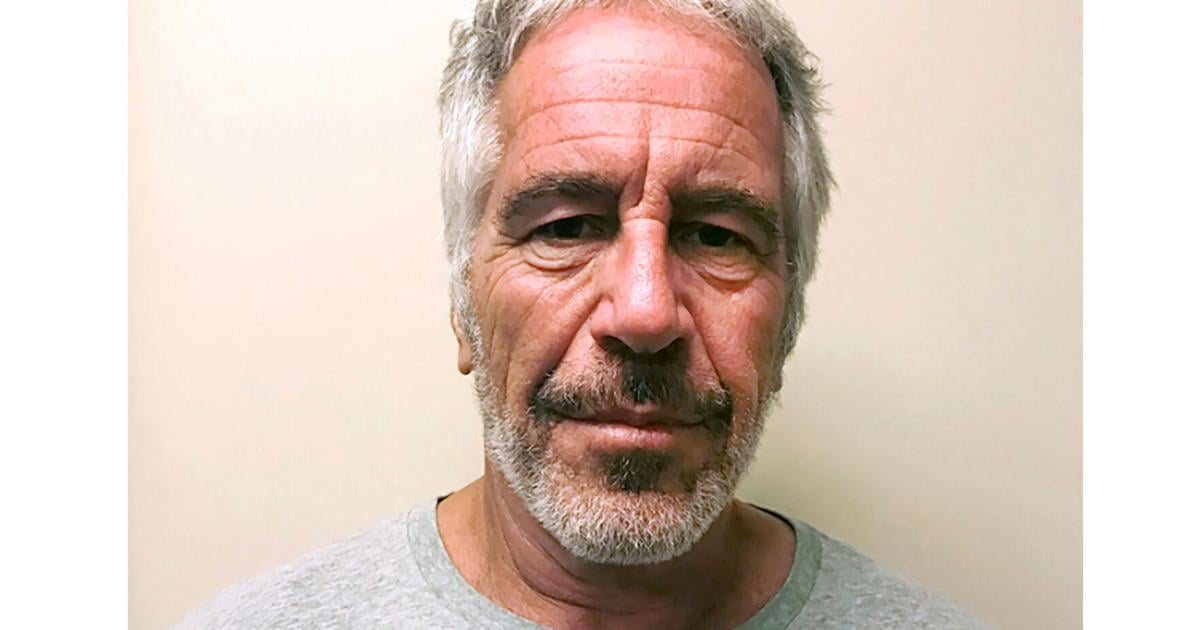
WASHINGTON (AP) — The Justice Department released thousands of files Friday about convicted sex offender Jeffrey Epsteinbut the incomplete document dump did not break significant ground about the long-running criminal investigations of the financier or his ties to wealthy and powerful individuals.
The files included photographs of famous people who spent time with Epstein in the years before he came under suspicion, including some candid snapshots of Bill Clintonwho flew on Epstein’s jet and invited him to the White House in the years before the financier was accused of wrongdoing. But there was almost no material related to another old Epstein friend, President Donald Trump, aside from a few well-known images, sparing the White House from having to confront fresh questions about a relationship the administration has tried in vain to minimize.
The recordsconsisting largely of pictures but also including call logs, grand jury testimony, interview transcripts and other documents, arrived amid extraordinary anticipation that they might offer the most detailed look yet at nearly two decades worth of government scrutiny of Epstein’s sexual abuse of young women and underage girls. Yet the release, replete with redactions, seemed unlikely to satisfy the clamor for information given how many records had yet to be released and because some of the materials had already been made public.
Democrats and some Republicans seized on the limited release to accuse the Justice Department of failing to meet a congressionally set deadline to produce the files, while White House officials on social media gleefully promoted a photo of Clinton in a hot tub with a woman with a blacked-out face. The Trump administration touted the release as proof of its commitment to transparency, ignoring that the Justice Department just months ago said no more files would be released. Congress then passed a law mandating it.
In a letter to Congress, Deputy Attorney General Todd Blanche wrote that the Justice Department was continuing to review files in its possession, was withholding some documents under exemptions meant to protect victims and expected additional disclosures by the end of the year.
Trump, who was friends with Epstein for years before the two had a falling-out, tried for months to keep the records sealed.
But bowing to political pressure from fellow Republicans, Trump last month signed a bill giving the Justice Department 30 days to release most of its files and communications related to Epstein, including information about the investigation into his death in a federal jail. The law set a deadline for Friday.
Compiling accurate and thorough information takes time. A team of AP reporters is working to confirm information released by the Justice Department regarding Jeffrey Epstein.
These standards guide our reporting process:
- We generally do not identify those who say they have been sexually assaulted or subjected to extreme abuse
- We must make significant efforts to reach anyone who may be portrayed in a negative way in our content
- We will not knowingly introduce rumor or false information into material
- We abhor inaccuracies, carelessness, bias or distortions
- We always strive to identify all the sources of our information
▶ Read our statement of news values and principles
Limited details about Trump
Trump is hardly glimpsed in the files, with the small number of photos of him appearing to have been in the public domain for decades. Those include two in which Trump and Epstein are posing with now-first lady Melania Trump in February 2000 at an event at his Mar-a-Lago resort.
Trump’s connection to Epstein is well-documented, but he has sought to distance himself from his former friend. He has said he cut off ties with Epstein after the financier hired young female employees from Mar-a-Lago and has repeatedly denied knowledge of his crimes.
The FBI and Justice Department abruptly announced in July that they would not be releasing any additional records, a decision that was supported by Trump. But the president reversed course once it became clear that congressional action was inevitable. He insisted the Epstein matter had become a distraction to the Republican agenda and releasing the records was the best way to move on.
The White House, meanwhile, has moved to shift focus away from Trump’s ties to Epstein, with Attorney General Pam Bondi last month saying that she had ordered a federal prosecutor to investigate Epstein’s connections to Trump’s political foes, including Clinton.
Neither Trump nor Clinton has ever been accused of wrongdoing in connection with Epstein, and the mere inclusion of someone’s name in the files from the investigation does not imply otherwise.
Among other prominent Epstein contacts is the former Prince Andrew, who appears in a photograph released Friday wearing a tuxedo and lying on the laps of what appear to be several women who are seated, dressed in formalwear. Pop star Michael Jackson also appears in multiple photos, including one showing him standing next to a smiling Epstein.
New photos of Clinton
Unlike Trump, Clinton is featured prominently in the files, though the records included no explanation of how the photographs of the former president related to any investigation or the context surrounding them.
Some photos showed him on a private plane, including one with a woman, whose face is redacted, seated alongside him with her arm around him. Another shows him in a pool with Epstein’s longtime confidant, British socialite Ghislaine Maxwelland a person whose face was also redacted. He is also seen in a hot tub with a woman whose face was redacted.
Senior Trump White House aides took to X to promote the Clinton photos.

This undated, redacted photo released by the U.S. Department of Justice shows former President Bill Clinton with an unknown person. (U.S. Department of Justice via AP)
This undated, redacted photo released by the U.S. Department of Justice shows former President Bill Clinton with an unknown person. (U.S. Department of Justice via AP)
White House press secretary Karoline Leavitt wrote “Oh my!” and added a shocked face emoji in response to a photo of Clinton in the hot tub.
“They can release as many grainy 20-plus-year-old photos as they want, but this isn’t about Bill Clinton,” Clinton spokesman Angel Ureña said in a statement.
“There are two types of people here,” he said. “The first group knew nothing and cut Epstein off before his crimes came to light. The second group continued relationships after that. We’re in the first. No amount of stalling by people in the second group will change that.”
The Epstein investigations
After nearly two decades of court action, a voluminous number of Epstein records had already been public before Friday, including flight logs, address books, email correspondence, police reports, grand jury records, courtroom testimony and deposition transcripts.
Besides public curiosity about whether any of Epstein’s associates knew about or participated in the abuse, Epstein’s accusers have also sought answers about why federal authorities shut down their initial investigation into the allegations in 2008.
“Just put out the files,” said Marina Lacerda, who says she survived sexual assault by Epstein. “And stop redacting names that don’t need to be redacted.”
One of the few revelations in the documents was a copy of the earliest known concern about Epstein’s behavior — a report taken by the FBI of a woman in 1996 who believed photos and negatives she had taken of her 12-year-old and 16-year-old sisters for a personal art project had been stolen by Epstein. The documents don’t show what, if anything, the agency did with that complaint.
Police in Palm Beach, Florida, began investigating Epstein in 2005 after the family of a 14-year-old girl reported being molested at his mansion. The FBI joined the investigation. Authorities gathered testimony from multiple underage girls who said they’d been hired to give Epstein sexual massages.
Ultimately, prosecutors gave Epstein a deal that allowed him to avoid federal prosecution. He pleaded guilty to state prostitution charges involving someone under age 18 and was sentenced to 18 months in jail.
Epstein’s accusers spent years in civil litigation trying to get that plea deal set aside. One of those women, Virginia Giuffre, accused Epstein of arranging for her to have sexual encounters, starting at age 17, with other men, including billionaires, famous academics, politicians and Andrew Mountbatten-Windsor, then known as Britain’s Prince Andrew.
Mountbatten-Windsor denied ever having sex with Giuffre, but King Charles III stripped him of his royal titles this year.
Prosecutors never brought charges in connection with Giuffre’s claims, but her account fueled conspiracy theories about supposed government plots to protect the powerful. Giuffre died by suicide in April.
Federal prosecutors in New York brought new sex trafficking charges against Epstein in 2019, but he killed himself in jail after his arrest. Prosecutors then charged Maxwell, his longtime confidant, with recruiting underage girls for Epstein to abuse. She was convicted in 2021 and is serving a 20-year prison sentence.
___
Sisak reported from New York. Associated Press reporters from around the country contributed to this report.
___
Follow the AP’s coverage of Jeffrey Epstein at https://apnews.com/hub/jeffrey-epstein.
The Dictatorship
Trump admin awards hepatitis B vaccine contract to Europeans working in Guinea-Bissau

NEW YORK (AP) — The Trump administration has awarded a $1.6 million, no-bid contract to a Danish university to study hepatitis B vaccinations on newborns in Africa that is raising ethical concerns.
The unusual contract was awarded to scientists who have been cited by anti-vaccine activists and whose work has been questioned by leading public health experts. Some experts have suggested the research plan is unethical, because it will withhold vaccines that work from newborns at significant risk of infection.
The contract did not undergo a customary ethics review, The Associated Press has learned.
The Centers for Disease Control and Prevention awarded the grant to a research team at the University of Southern Denmark that has been lauded by U.S. Health Secretary Robert F. Kennedy Jr., according to a federal notice posted this week.
One of the team’s leaders is Christine Stabell Benn, a consultant for a Kennedy-appointed committee that recently voted to stop recommending a dose of hepatitis B vaccine for all U.S. newborns.
The study is to begin early next year in Guinea-Bissau, an impoverished West African nation where hepatitis B infection is common. The researchers are funded for five years to study 14,000 newborns.
It’s to be a randomized controlled trial, with some infants given the hepatitis B vaccine at birth and some not. Children will be tracked for death, illness and long-term developmental outcomes.
Most of the children will be followed for less than two years to look for side effects, but the first 500 enrolled will be followed for five years to look for behavior and brain development problems. There is no placebo involved, according to a copy of the study protocol prepared earlier this year that was obtained by the AP.
Hepatitis B can be passed from an infected mother to a baby. It also can be spread by other infected people a baby comes in contact with.
Research and widespread medical consensus holds that the hepatitis B vaccine protects newborns, so withholding it from some babies — in this case, Black babies — has raised ethical alarms.
Medical evidence is clear that the vaccine protects infants from developing liver disease and an early death. The well-documented infection risk far outweighs hypothetical concerns about side effects, said Dr. Boghuma K. Titanji, an Emory University infectious diseases doctor.
She called the study “unconscionable,” and said it likely will exacerbate existing vaccine hesitancy in Africa and elsewhere.
“There’s so much potential for this to be a harmful study,” said Titanji, who is from Cameroon.
Benn did not respond to an email seeking comment about the proposal. An automatic response said she is out of the office until early January.
But, in a statementthe research team said the study “will be the first and likely the only one of its kind.”
They said it takes advantage of an unusual window of opportunity: Guinea-Bissau doesn’t currently recommended a birth dose of the hep B vaccine, but the nation will be implementing universal vaccination of newborns in 2027.
Vaccine skeptics and opponents have suggested that all the vaccine’s possible side effects were inadequately studied before the CDC began recommending it for newborns in 1991. Public health experts counter that over more than three decades no serious side effect has been documented.
The award is highly unusual. The CDC did not announce a research funding opportunity and invite proposals.
The proposal was unsolicited and the award did not go through customary review, said a CDC official with knowledge of the decision. Department of Health and Human Services officials told CDC officials to approve it and said HHS would provide special funding for it, the CDC official said.
In private communications channels, CDC staffers were expressing outrage about the award, said the official, who is not authorized to talk about it and spoke on condition of anonymity.
Some of those CDC scientists have compared the work to the infamous Tuskegee Studywhich the agency oversaw in its later stages. In that decades-long study, health workers withheld treatment from unsuspecting Black men infected with syphilis so doctors could track the horrible ravages of the disease.
Like Tuskegee, this study involves the prospect of researchers watching people grow ill when a medical intervention could have kept them healthy, Titanji echoed.
“It is an apt comparison,” she said.
The new study’s researchers say the trial was approved by a national ethics committee in Guinea-Bissau. But it did not undergo a customary ethics review within the CDC, the agency official told the AP.
In a statement, HHS spokesman Andrew Nixon said “we will ensure the highest scientific and ethical standards are met.”
Public health scientists noted questions have been raised in the past about research led by Benn and her husband, Peter Aaby, in their Bandim Health Project.
Other Danish researchers who reviewed Aaby and Benn’s work have described questionable research practices. Earlier this year, former CDC Director Dr. Tom Frieden wrote an editorial calling a 2017 study co-authored by Aaby and Benn “fundamentally flawed.”
Several researchers had harsh words about the latest award.
“Aaby and Benn are doing the Guinea-Bissau HBV vaccine depravation trial,” Carl Bergstrom, a University of Washington evolutionary biologist, wrote in a post on Bluesky. “Did RFK Jr. just call up the first name in the antivax yellow pages?”
Dr. Angela Rasmussen, a virus expert at the University of Saskatchewan, said Kennedy was giving taxpayers’ money to his “cronies” for a “grossly unethical study that will expose African babies to hep B for no reason.”
___
The Associated Press Health and Science Department receives support from the Howard Hughes Medical Institute’s Science and Educational Media Group and the Robert Wood Johnson Foundation. The AP is solely responsible for all content.
The Dictatorship
It’s decision time for states on Trump’s big tax cuts
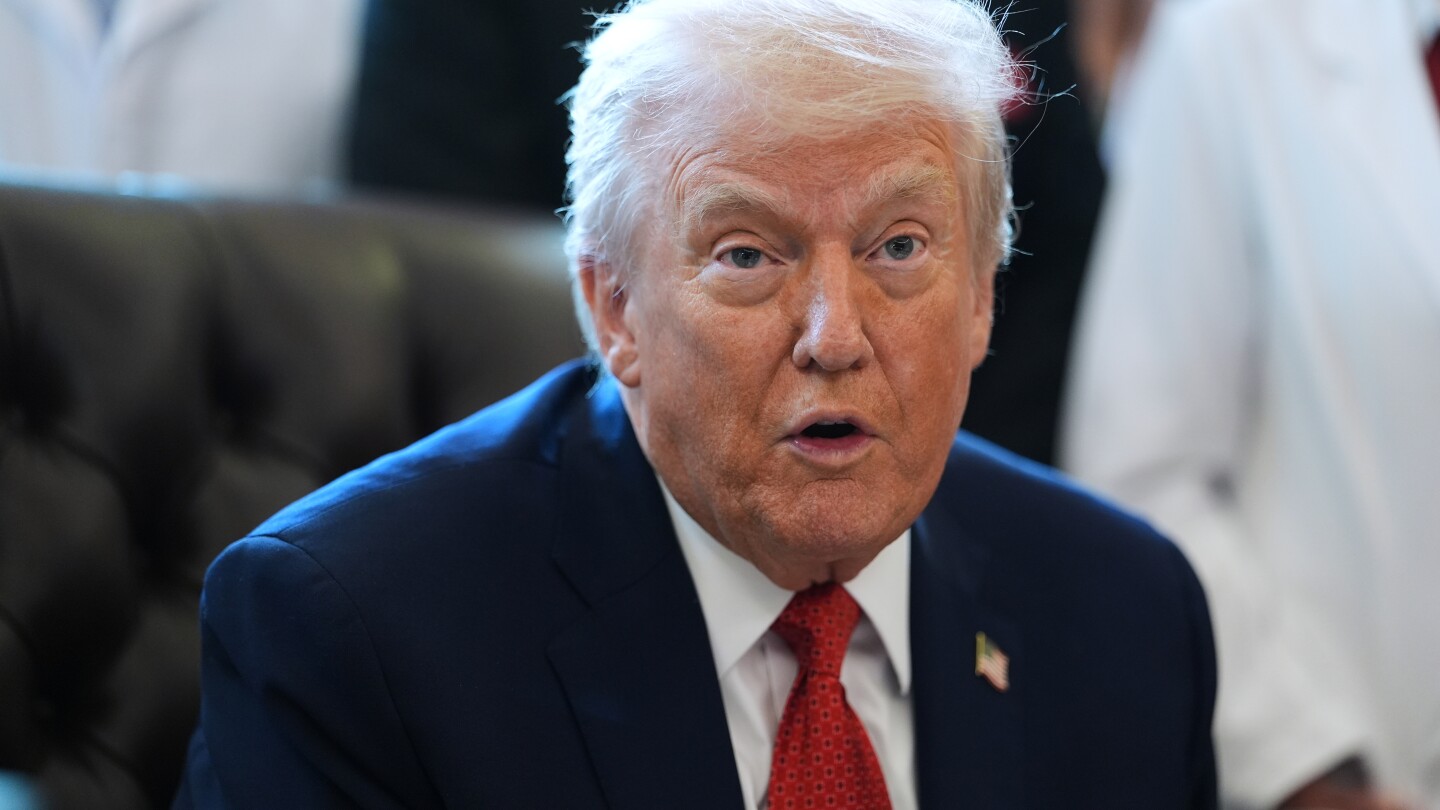
JEFFERSON CITY, Mo. (AP) — To tax tips or not? That is a question that will confront lawmakers in states across the U.S. as they convene for work next year.
President Donald Trump’s administration is urging states to follow its lead by enacting a slew of new tax breaks for individuals and businesses, including deductions for tips and overtime wages, automobile loans and business equipment.
In some states, the new federal tax breaks will automatically apply to state income taxes unless legislatures opt out. But in many other states, where tax laws are written differently, the new tax breaks won’t appear on state tax forms unless legislatures opt in.
In states that don’t conform to the federal tax changes, workers who receive tips or overtime — for example — will pay no federal tax on those earnings but could still owe state taxes on them.
States that embrace all of Trump’s tax cuts could provide hundreds of millions of dollars of annual savings to certain residents and businesses. But that could financially strain states, which are being hit with higher costs because of new Medicaid and SNAP food aid requirements that also are included in the big bill Trump signed.
Most states begin their annual legislative sessions in January. To retroactively change tax breaks for 2025, lawmakers would need to act quickly so tax forms could updated before people begin filing them. States also could apply the changes to their 2026 taxes, a decision requiring less haste.
Stay up to date with the news and the best of AP by following our WhatsApp channel.
So far, only a few states have taken votes on whether to adopt the tax breaks.
“States in general are approaching this skeptically,” said Carl Davis, research director at the nonprofit Institute on Taxation and Economic Policy.
Trump’s treasury presses states to `immediately conform’
A bill Trump signed on July 4 contains about $4.5 trillion of federal tax cuts over 10 years.
It creates temporary tax deductions for tips, overtime and loan interest on new vehicles assembled in the U.S. It boosts a tax deduction for older adults. And it temporarily raises cap on state and local tax deductions from $10,000 to $40,000, among other things. The law also provides numerous tax breaks to businesses, including the ability to immediately write off 100% of the cost of equipment and research.
Forty-one states levy individual income taxes on wages and salaries. Forty-four states charge corporate income taxes.
Treasury Secretary Scott Bessent this month called on those states “to immediately conform” to the federal tax cuts and accused some Democratic-led states that haven’t done so of engaging in “political obstructionism.” Though Bessent didn’t mention it, many Republican-led states also have not decided whether to implement the tax deductions.
“By denying their residents access to these important tax cuts, these governors and legislators are forcing hardworking Americans to shoulder higher state tax burdens, robbing them of the relief they deserve and exacerbating the financial squeeze on low- and middle-income households,” Bessent said.
But some tax analysts contend there’s more for states to consider. The tax break on tips, for example, could apply to nearly 70 occupation fields under a proposed rule from the Internal Revenue Service. But that would still exclude numerous low-wage workers, said Jared Walczak, vice president of state projects at the nonprofit Tax Foundation.
“Lawmakers need to consider whether these are worth the cost,” Walczak said.
Only a few states offer tax breaks for tips and overtime
Because of the way state tax laws are written, the federal tax breaks for tips and overtime wages would have carried over to just seven states — Colorado, Idaho, Iowa, Montana, North Dakota, Oregon and South Carolina. But Colorado opted out of the state tax break for overtime shortly before the federal law was enacted.
Michigan this fall became first — and, so far, only — state to opt into the tax breaks for tips and overtime wageseffective in 2026. The overtime tax exemption is projected to cost the state nearly $113 million and the tips tax break about $45 million during its current budget year, according to the state treasury department.
Michigan lawmakers offset that by decoupling from five federal corporate tax changes the state’s treasury estimated would have reduced Michigan tax revenues by $540 million this budget year.
Republican state Rep. Ann Bollin, chair of the Michigan House Appropriations Committee, said the state could not afford to embrace all the tax cuts while still investing in better roads, public safety and education.
“The best path forward is to have more money in people’s pockets and have less regulation — and this kind of moved in that direction,” she said.
Arizona could be among the next states to act. Democratic Gov. Katie Hobbs has called upon lawmakers to adopt the tax breaks for tips, overtime, seniors and vehicle loans, and follow the federal government by also increasing the state’s standard deduction for individual income taxpayers. Republican state House leaders said they stand ready to pass the tax cuts when their session begins Jan. 12.
Several states have rejected corporate tax breaks
In addition to Michigan, lawmakers in Delaware, Illinois, Pennsylvania and Rhode Island have passed measures to block some or all of the corporate tax cuts from taking effect in their states.
A new Illinois law decoupling from a portion of the corporate tax changes could save the state nearly $250 million, said Democratic state Sen. Elgie Sims, chair of the Senate Appropriations Committee. He said that could help ensure continued funding for schools, health care and vital services.
Illinois Gov. JB Pritzkeran outspoken Democratic opponent of Trump, also cited budget concerns for rejecting the corporate tax cut provision. He said states already stand to lose money because of other provisions in Trump’s big bill, such as a requirement to cover more of the costs of running the Supplemental Nutrition Assistance Program.
“The decoupling is an effort to try to hold back the onslaught from the federal government to make sure that we can support programs like the one we’re announcing today,” Pritzker told reporters at a December event publicizing a grant to address homelessness in central Illinois.
___
Associated Press writer John O’Connor in Springfield, Illinois, contributed to this report.
-

 Politics10 months ago
Politics10 months agoBlue Light News’s Editorial Director Ryan Hutchins speaks at Blue Light News’s 2025 Governors Summit
-
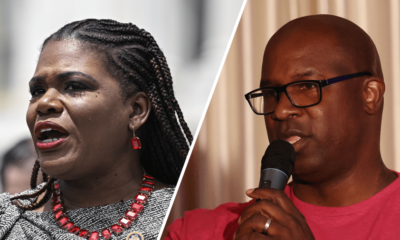
 Politics10 months ago
Politics10 months agoFormer ‘Squad’ members launching ‘Bowman and Bush’ YouTube show
-

 The Dictatorship10 months ago
The Dictatorship10 months agoLuigi Mangione acknowledges public support in first official statement since arrest
-

 The Dictatorship10 months ago
The Dictatorship10 months agoPete Hegseth’s tenure at the Pentagon goes from bad to worse
-
Uncategorized1 year ago
Bob Good to step down as Freedom Caucus chair this week
-
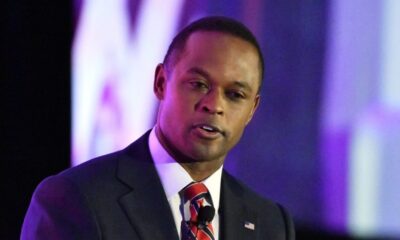
 Politics10 months ago
Politics10 months agoFormer Kentucky AG Daniel Cameron launches Senate bid
-

 The Dictatorship3 months ago
The Dictatorship3 months agoMike Johnson sums up the GOP’s arrogant position on military occupation with two words
-

 Politics8 months ago
Politics8 months agoDemocrat challenging Joni Ernst: I want to ‘tear down’ party, ‘build it back up’






